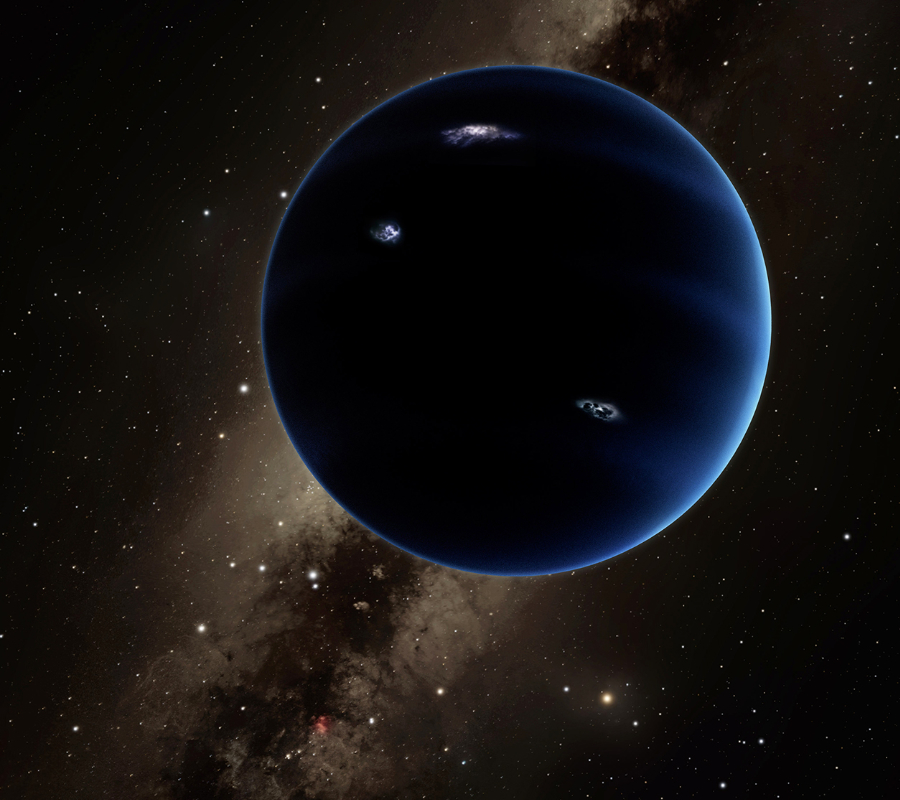Our solar system might be home to a hidden planet beyond Neptuno that is causing several disruptions in the orbits of icy minor planets located in the Kuiper belt. The thought that a Planet Nine may exist began in 2014 and two research teams have come up with the latest evidence suggesting that this world has caused strange orbital paths.
With ten research teams currently searching for strong evidence of Planet Nine, scientists claim they will find it within 16 months by taking advantage of the most advanced telescopes on Earth. The discovery of this distant planet could significantly change the way scientists understand our solar system. The new findings were presented this week at the joint 48th meeting of the Division for Planetary Sciences of the American Astronomical Society and 11th European Planetary Science Congress in Pasadena.


Planet Nine may be pulling the rest of the planets out of alignment with the sun
Mike “Pluto Killer” Brown was the first to talk about the ninth planet theory. He and fellow Caltech researcher Konstantin Batygin found early this year that the paths of about six extremely cold, distant objects appeared to be tilted from similar angles relative to the plane of the solar system. Their closest points to their parent star known as perihelia apparently clustered together, which makes the researchers believe that a massive, unknown world may have caused that effect.
Batygin and Brown calculated Planet Nine’s weight, which could be about ten times that of the Earth. They also estimated that it would probably take 10,000 to 20,000 years for this planet to orbit the sun. In a paper recently accepted for publication in the Astrophysical Journal, the scientists said that the massive world’s pull might have caused the solar system’s tilt relative to the sun.
“I’m pretty sure, I think, that by the end of next winter – not this winter, next winter – I think that there’ll be enough people looking for it that … somebody’s actually going to track this down,” said Professor Brown at a meeting in Pasadena, as quoted by the Daily Mail. He added either there is a ninth planet today or there used to be one before and it disappeared, as reported by USA Today.
Elizabeth Bailey, an astronomer and Ph.D. student at Caltech, said scientists have wondered since the mid-1800s why the plane in which all the planets orbit in the solar system is tilted about 6 degrees off the sun’s equator. Their orbits are mostly flat, but the specific zone in which they orbit the sun is tilted, and a plausible explanation would be that a massive planet with an orbit set 30 degrees of the rest of the planets could have pulled the rest of the planets out of alignment with the sun.
“From our vantage point, it looks like it’s the sun that’s tilted — but really it’s the plane of the planets processing around the total angular momentum of the solar system, just like a top,” Bailey said, according to the LA Times.
9th planet’s gravity
A separate research team led by University of Arizona’s Planetary scientist Renu Malhotra looked closely at the orbits of four extreme Kuiper belt objects which have the longest-known orbital periods. The researchers found that their orbits can be similarly described in simple, whole-number ratios, which suggests that the gravity from a massive hidden object is pulling them into these resonances.
The LATimes report notes that Neptune could not be causing this effect given that the orbits of these objects take them beyond the influence of the icy minor planet, which is the largest member of the Kuiper belt.
According to Malhotra’s team, Planet Nine would orbit the sun every 17,000 years, a calculation similar to that of Caltech scientists, who estimated a range of 10,000 to 20,000 years. The farthest point of such a planetoid would be 665 astronomical units (AU) away from the sun.
Neither of the research teams is actually declaring that Planet Nine is behind these disruptions, but they do present evidence that the existence of such a huge object may be a plausible explanation. Authors of both studies said they would continue to examine the motions of the objects in the solar system to find more hints.
There might be other possible explanations. The planets’ orbits may have been created this way, or the sun core’s effect may have caused the alterations a long time ago.
Planet Nine represents the first proposal about an object that appeared to tilt the solar system regardless of early conditions and further evidence will show whether this planetoid was the only player in this story, as Bailey told Space.com.
Source: LA Times
